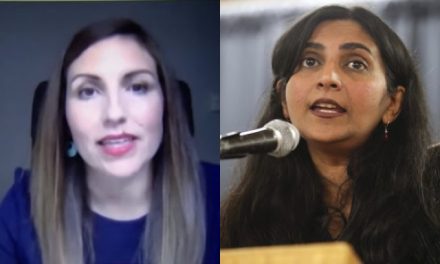A London-born expert on Islam is raising concerns about the efficacy and madness of deradicalization programs in European prisons, while upwards to a thousand ISIS-affiliated inmates will be released from behind bars this year.
As many as 1,000 terrorists who were once fighting for ISIS will be released from prisons in Europe throughout the remainder of the year. According to The National, Edmund Fitton-Brown, a former British ambassador to Yemen who is currently serving as coordinator of the UN’s sanctions monitoring team, says the move creates “a serious worry.” What’s more, this comes at a time when counterterrorism police fear ISIS sleeper cells may be plotting to commit attacks across Europe.
OneNewsNow spoke to Sam Westrop, director of Islamist Watch, a project of the Middle East Forum, about the bold move. Recent history should have taught Europeans “a couple of obvious lessons” about freeing terrorists, according to Westrop.
“A number of terrorist attacks in Europe,” he points out, “have been committed by people released from prison with jihadist or Islamist backgrounds.” He cites the London Bridge attack committed by Usman Khan in late 2019, for example.
“What the history of European prison radicalization [reveals] is that the prisons are a hotbed of extremism,” he continues. “[That suggests] prisons are an ideal place to not just radicalize existing Muslims, but to convert and radicalize non-Muslims as well.”
And British methods to combat prison radicalization have not been very successful, he adds, noting that efforts to thinly spread Islamists throughout the prison population failed because those inmates radicalized others. Another effort included separating jihadists from the prison population, housing them in their own wing of the prisons.
“All this did was introduce all these jihadists with different ideologies from different parts of the world to each other, [giving] them a sort of an international jihadi conference,” Westrop jokingly admits. However, he quickly points out the seriousness of the matter did include emerging partnerships and agreements between different jihadist movements.
The expert on Islam contends it is near impossible to stop radicalization in prisons, arguing that Europeans made a “huge mistake” in recent decades. The mistake, he explains, was an “obsession” with Countering Violent Extremism (CVE) programs and the belief people can be deradicalized. According to Westrop, no data has ever been offered showing the efficacy of CVE programs in prison.
“If someone is going to be deradicalized, they need to want to be deradicalized,” he emphasizes. “Prisons have been hotbeds for extremism and radicalization, and nothing has worked.”
As for when the 1,000 or so prisoners are released, Westrop contends “there’s no doubt that the majority of those people will still believe the same things that led them to being in jail in the first place.” Extremism, he argues, will continue to propagate and these very people will continue to commit acts of violence.
Westrop acknowledges “some may carry out non-violent extremism and radicalize communities within Europe, [but] others may turn to violent extremism to become ‘homegrown terrorists’ or go abroad to become foreign recruits for terrorist groups.
“There is no reason to think these people will act any differently than other recruits to jihadism who haven’t come through the prison system.”
The only remote difference, he suggests, is that these people have had years to congregate among each other, risking further radicalization.
Interestingly, deradicalization programs have appointed imams to be chaplains to Muslims without concern for the particular theology a given imam may be teaching inside the prison. In fact, Westrop points out imams are actually selected and approved by Muslim community groups.
“And, of course, those Muslim community groups are actually Islamist groups with ties to Jamaat-e-Islami, the Muslim Brotherhood, Salafis, and Deobandis,” he adds. “The majority of these chaplains are not deradicalizing anyone, [but may likely be] further radicalizing.
“[At the very least], they’re certainly continuing to provide the theology and the underpinning ideological reasoning that allows these people in prison to go on and commit jihadist acts, even if they weren’t exposed to incitements to commit violence while in prison.”
He blames extremism. “It’s all about assisting the ideological underpinnings of terrorism,” he emphasizes. And sadly, he says, the prison system has not found a way to keep Islamists from spreading their dangerous ideology.
“It’s mad to think this problem can be stopped in prison,” he argues. “[And] it seems even madder to then release them.”
Westrop states what he calls a “quite pessimistic point,” sharing “there aren’t any particularly good options for the state to take that can completely ensure Islamic cells cannot form in European prison systems.”
He considers that an impossibility – and a factor even more difficult to deal with in America prisons.
“American hesitation to ever interfere on the question of religious belief [is the problem],” he concludes. “What would be unconstitutional in the United States is now seen as imperative in parts of Europe as a means to stop the spread of Islamism and the resulting terrorism.”
—-
Copyright American Family News. Reprinted with permission.



















Recent Comments